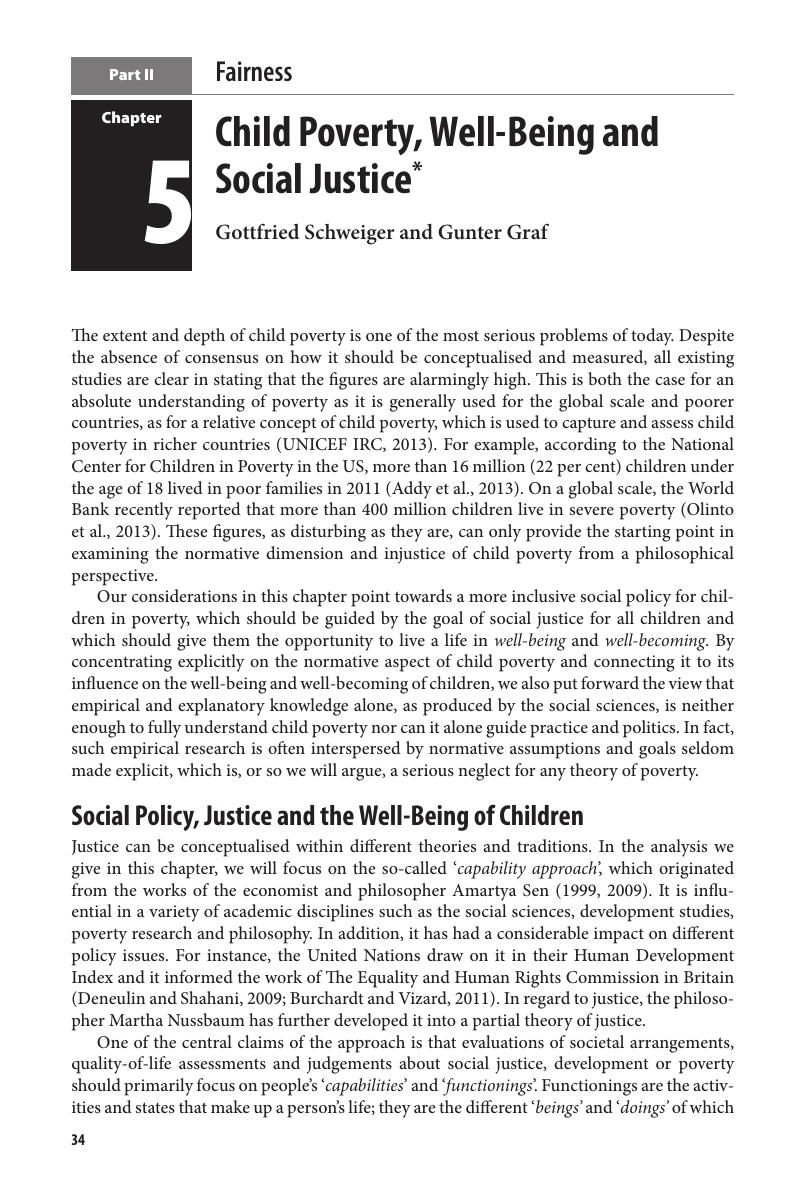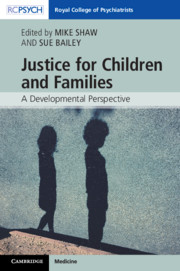Book contents
- Justice for Children and Families
- Justice for Children and Families
- Copyright page
- Contents
- Contributors
- Foreword
- Part I Overview
- Part II Fairness
- Chapter 3 The Social Determinants of Child Health
- Chapter 4 Philosophical Ethics and Children*
- Chapter 5 Child Poverty, Well-Being and Social Justice*
- Chapter 6 Children and Relational Citizenship
- Chapter 7 The United Nations Convention on the Rights of the Child (UNCRC)
- Part III Protection
- Part IV Autonomy
- Part V Synthesis and Response
- Index
- References
Chapter 5 - Child Poverty, Well-Being and Social Justice*
from Part II - Fairness
Published online by Cambridge University Press: 13 August 2018
- Justice for Children and Families
- Justice for Children and Families
- Copyright page
- Contents
- Contributors
- Foreword
- Part I Overview
- Part II Fairness
- Chapter 3 The Social Determinants of Child Health
- Chapter 4 Philosophical Ethics and Children*
- Chapter 5 Child Poverty, Well-Being and Social Justice*
- Chapter 6 Children and Relational Citizenship
- Chapter 7 The United Nations Convention on the Rights of the Child (UNCRC)
- Part III Protection
- Part IV Autonomy
- Part V Synthesis and Response
- Index
- References
Summary

- Type
- Chapter
- Information
- Justice for Children and FamiliesA Developmental Perspective, pp. 34 - 41Publisher: Cambridge University PressPrint publication year: 2018



